Abstract
Yeast strains sigma1278b and Harden and Young, which synthesize only an internal constitutive form of L-asparaginase, do not grow on D-asparagine, as a sole source of nitrogen, and whole cell suspensions of these strains do not hydrolyze D-asparagine. Strains X2180-A2 and D273-10B, which possess an externally active form of asparaginase, are able to grow slowly on D-asparagine, and nitrogen-starved suspensions of these strains exhibit high activity toward the D-isomer. Nitrogen starvation of strain X218O-A2 results in coordinate increase of D- and L-asparaginase activity; the specific activity observed for the D-isomer is approximately 20% greater than that observed for the L-isomer. It was observed, in studies with cell extracts, that hydrolysis of D-asparagine occurred only with extracts from nitrogen-starved cells of strains that synthesize the external form of asparaginase. Furthermore, the activity of the extracts toward the D-isomer was always higher than that observed with the L-isomer. A 400-fold purified preparation of external asparaginase from Saccharomyces cerevisiae X218U-A2 hydrolyzed D-asparagine with an apparent Km of 0.23 mM and a Vmax of 38.7 mumol/min per mg of protein. D-Asparagine was a competitive inhibitor of L-asparagine hydrolysis and the Ki determined for this inhibition was approximately equal to its Km. These data suggest that D-asparagine is a good substrate for the external yeast asparaginase but is a poor substrate for the internal enzyme.
Full text
PDF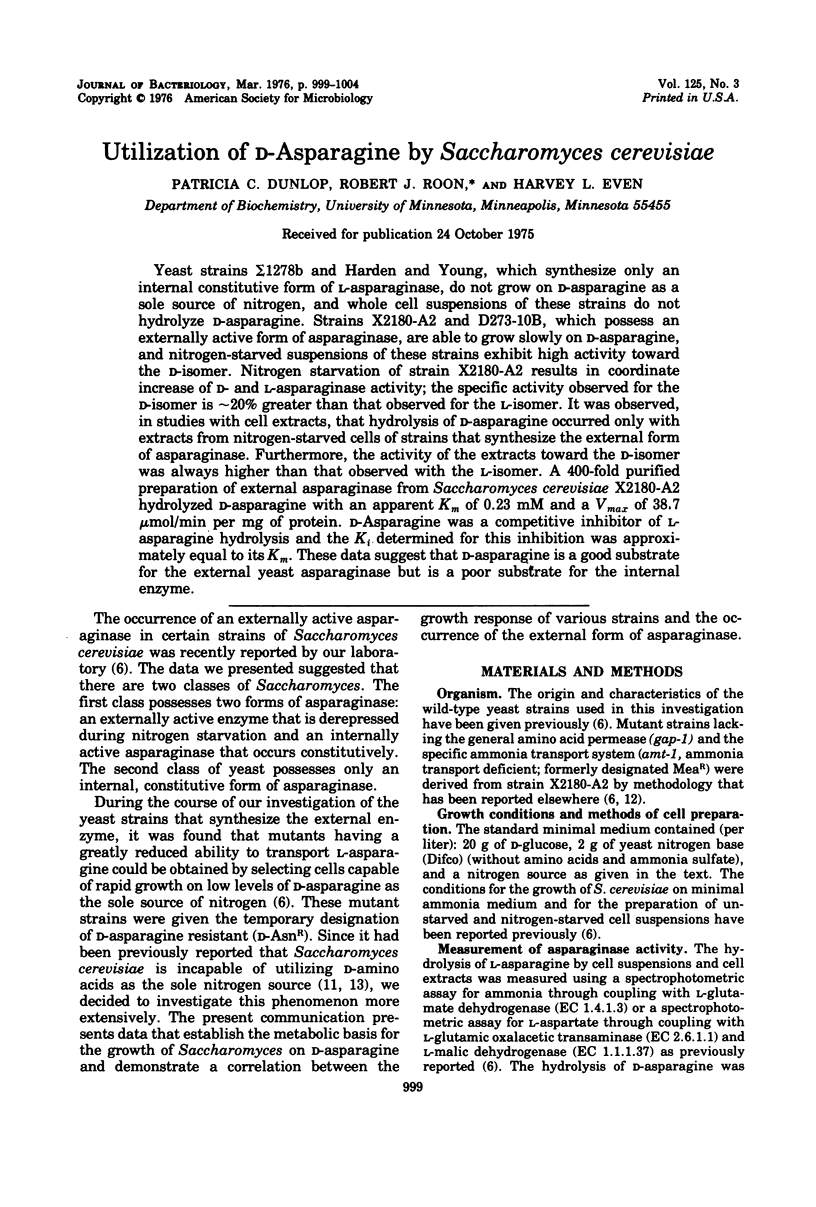
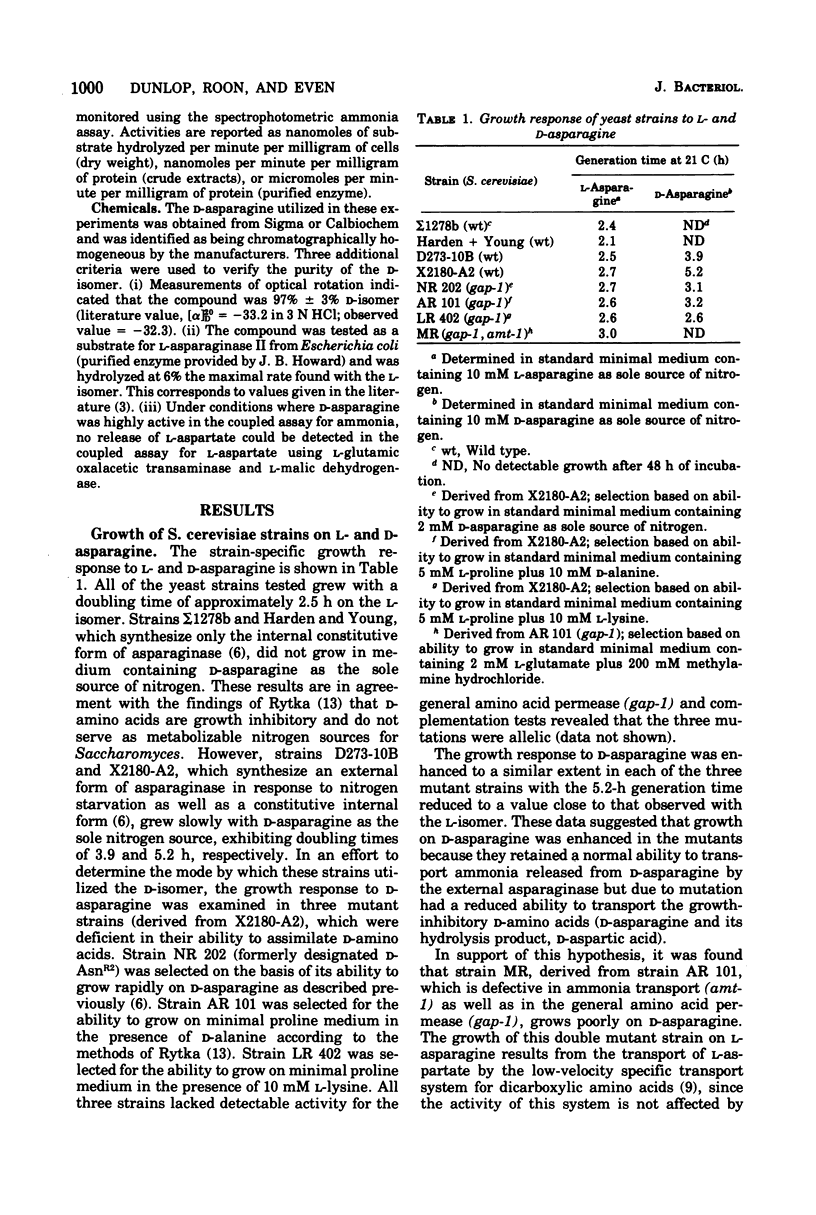
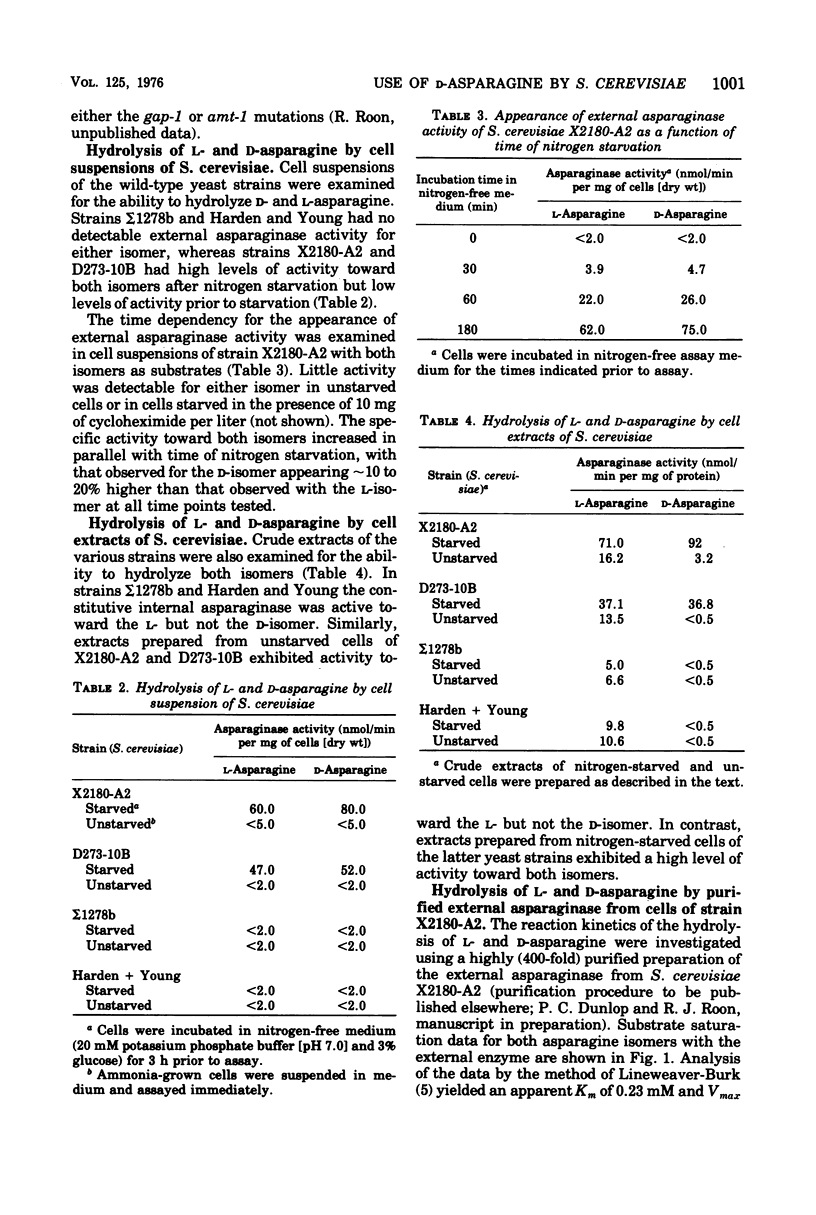
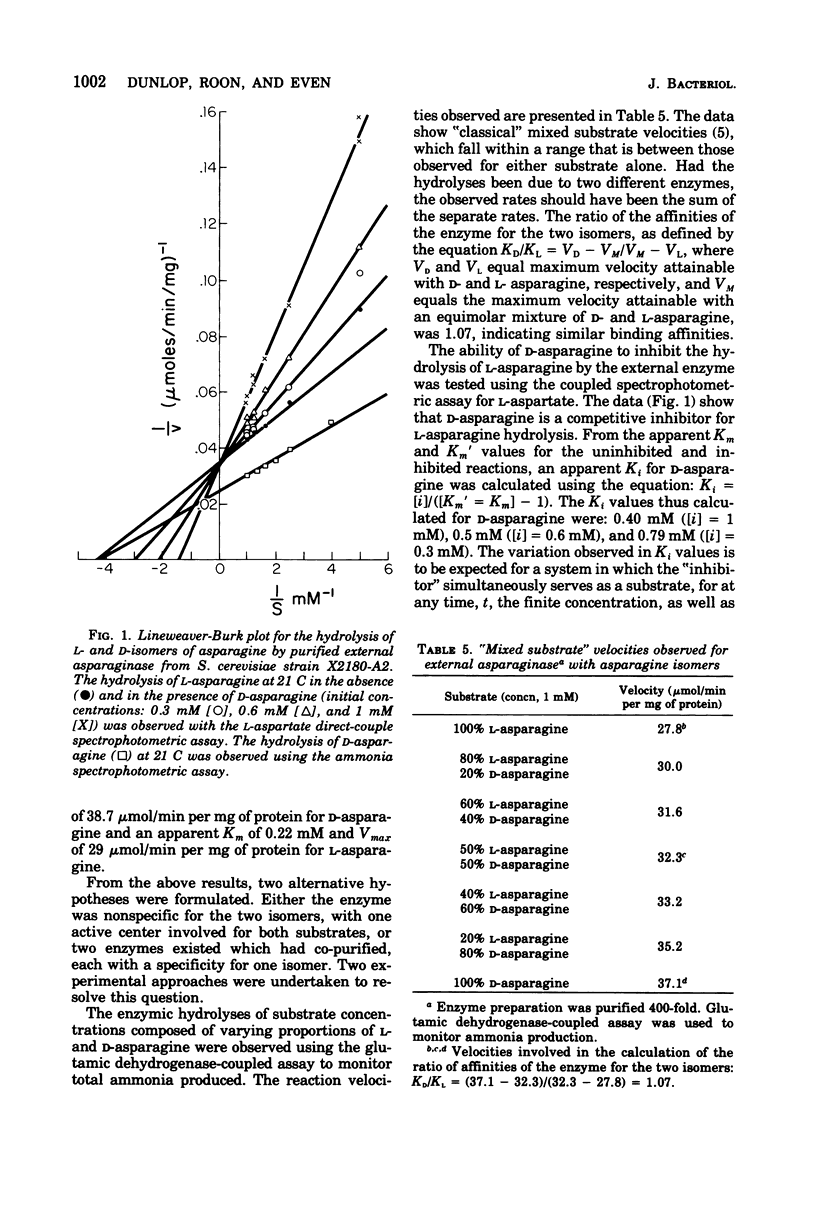
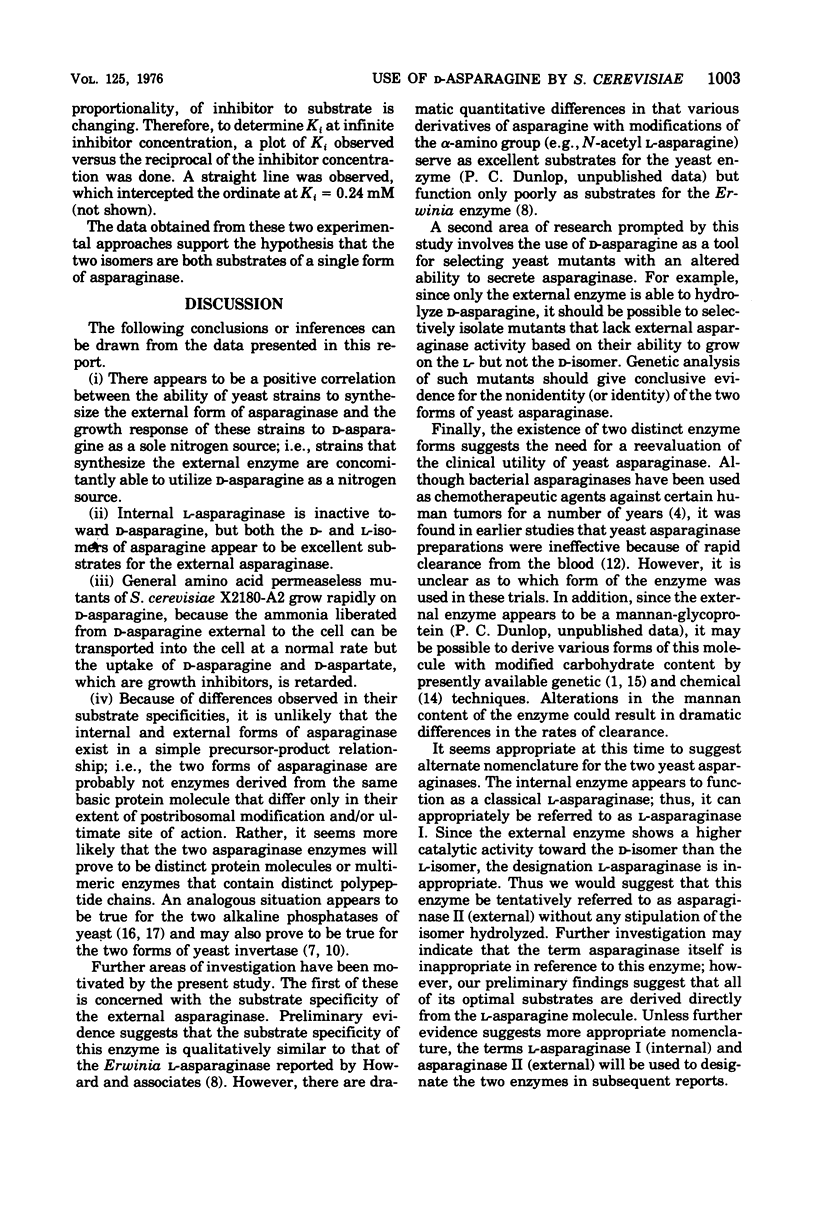
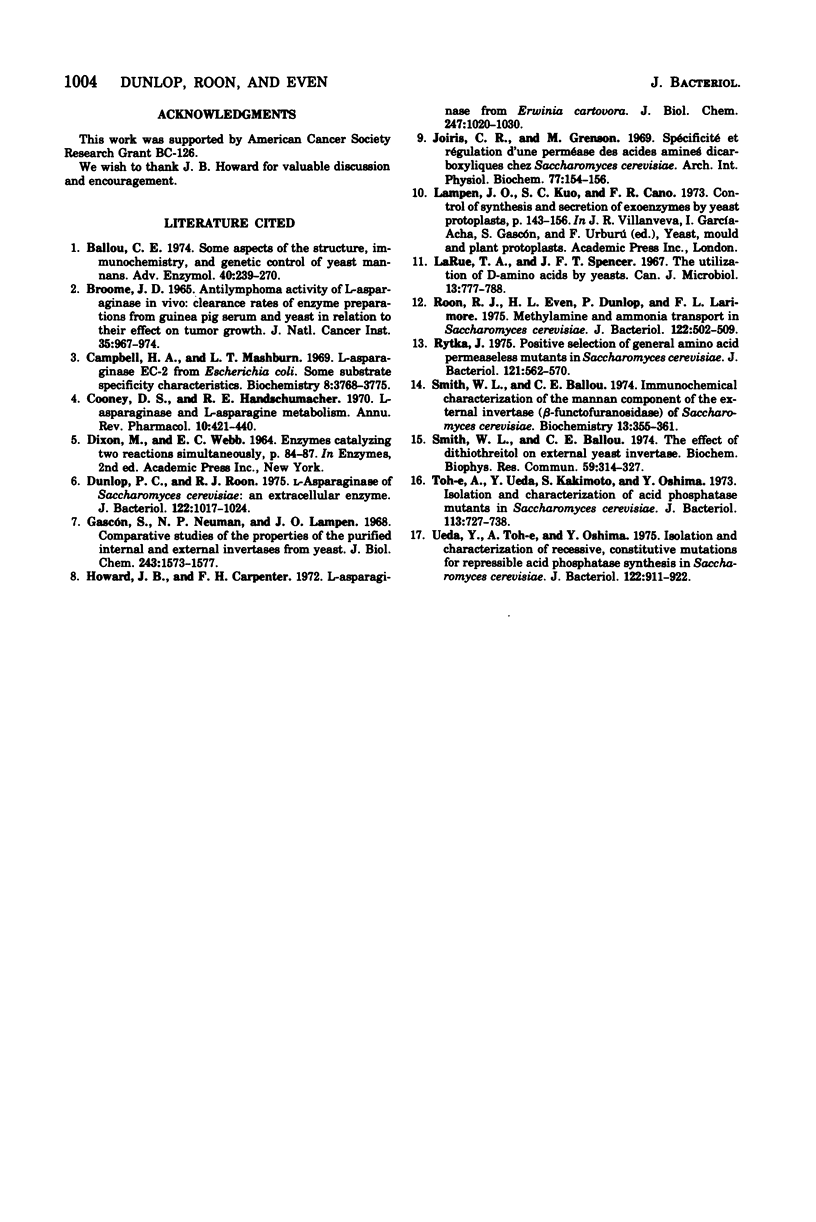
Selected References
These references are in PubMed. This may not be the complete list of references from this article.
- Ballou C. E. Some aspects of the structure, immunochemistry, and genetic control of yeast mannans. Adv Enzymol Relat Areas Mol Biol. 1974;40(0):239–270. doi: 10.1002/9780470122853.ch6. [DOI] [PubMed] [Google Scholar]
- Broome J. D. Antilymphoma activity of L-asparaginase in vivo: clearance rates of enzyme preparations from guinea pig serum and yeast in relation to their effect on tumor growth. J Natl Cancer Inst. 1965 Dec;35(6):967–974. [PubMed] [Google Scholar]
- Campbell H. A., Mashburn L. T. L-Asparaginase EC-2 from Escherichia coli. Some substrate specificity characteristics. Biochemistry. 1969 Sep;8(9):3768–3775. doi: 10.1021/bi00837a042. [DOI] [PubMed] [Google Scholar]
- Cooney D. A., Handschumacher R. E. L-asparaginase and L-asparagine metabolism. Annu Rev Pharmacol. 1970;10:421–440. doi: 10.1146/annurev.pa.10.040170.002225. [DOI] [PubMed] [Google Scholar]
- Dunlop P. C., Roon R. J. L-Asparaginase of Saccharomyces cerevisiae: an extracellular Enzyme. J Bacteriol. 1975 Jun;122(3):1017–1024. doi: 10.1128/jb.122.3.1017-1024.1975. [DOI] [PMC free article] [PubMed] [Google Scholar]
- Gascón S., Neumann N. P., Lampen J. O. Comparative study of the properties of the purified internal and external invertases from yeast. J Biol Chem. 1968 Apr 10;243(7):1573–1577. [PubMed] [Google Scholar]
- Howard J. B., Carpenter F. H. L-asparaginase from Erwinia carotovora. Substrate specificity and enzymatic properties. J Biol Chem. 1972 Feb 25;247(4):1020–1030. [PubMed] [Google Scholar]
- Joiris C. R., Grenson M. Spécificité et régulation d'une perméase des acis aminés dicarboxyliques chez "Saccharomyces crevisiae". Arch Int Physiol Biochim. 1969 Feb;77(1):154–156. [PubMed] [Google Scholar]
- LaRue T. A., Spencer J. F. The utilization of D-amino acids by yeasts. Can J Microbiol. 1967 Jul;13(7):777–788. doi: 10.1139/m67-103. [DOI] [PubMed] [Google Scholar]
- Roon R. J., Even H. L., Dunlop P., Larimore F. L. Methylamine and ammonia transport in Saccharomyces cerevisiae. J Bacteriol. 1975 May;122(2):502–509. doi: 10.1128/jb.122.2.502-509.1975. [DOI] [PMC free article] [PubMed] [Google Scholar]
- Rytka J. Positive selection of general amino acid permease mutants in Saccharomyces cerevisiae. J Bacteriol. 1975 Feb;121(2):562–570. doi: 10.1128/jb.121.2.562-570.1975. [DOI] [PMC free article] [PubMed] [Google Scholar]
- Smith W. L., Ballou C. E. Immunochemical characterization of the mannan component of the external invertase (beta-fructofuranosidase) of Saccharomyces cerevisiae. Biochemistry. 1974 Jan 15;13(2):355–361. doi: 10.1021/bi00699a021. [DOI] [PubMed] [Google Scholar]
- Smith W. L., Ballou C. E. The effect of dithiothreitol on external yeast invertase. Biochem Biophys Res Commun. 1974 Jul 10;59(1):314–321. doi: 10.1016/s0006-291x(74)80208-1. [DOI] [PubMed] [Google Scholar]
- To-E A., Ueda Y., Kakimoto S. I., Oshima Y. Isolation and characterization of acid phosphatase mutants in Saccharomyces cerevisiae. J Bacteriol. 1973 Feb;113(2):727–738. doi: 10.1128/jb.113.2.727-738.1973. [DOI] [PMC free article] [PubMed] [Google Scholar]
- Ueda Y., To-E A., Oshima Y. Isolation and characterization of recessive, constitutive mutations for repressible acid phosphatase synthesis in Saccharomyces cerevisiae. J Bacteriol. 1975 Jun;122(3):911–922. doi: 10.1128/jb.122.3.911-922.1975. [DOI] [PMC free article] [PubMed] [Google Scholar]


